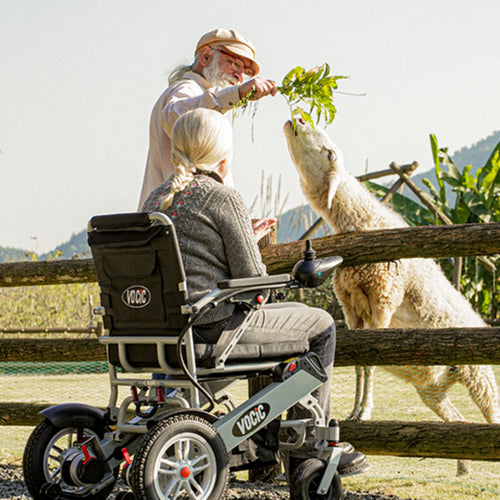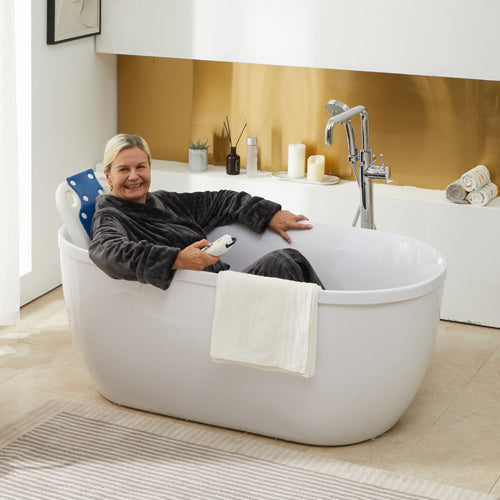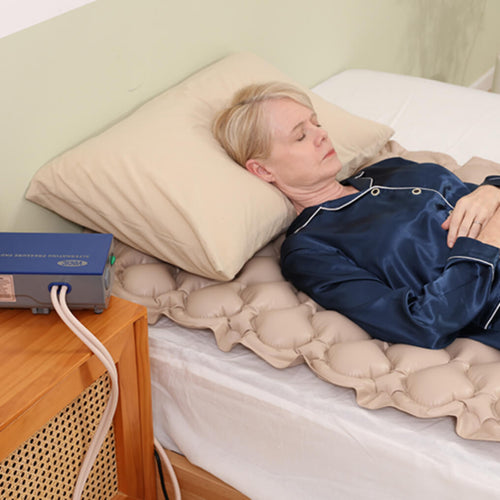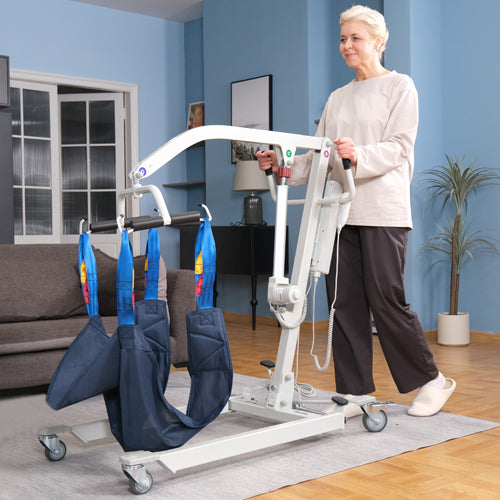Choosing the right mobility aid is important for people who need mobility aids due to age, injury, or disability. In this guide, we'll delve into the factors that simplify the selection process to ensure you find the right mobility aid for your needs.
What Are Walkers?
A rollators is a type of mobility aid device designed to assist individuals with walking difficulties. It is intended to provide support and stability for people who are unable to walk independently due to reasons such as age, injury, or disability.
There are many types of walkers, but they typically consist of a frame with four legs and handgrips, offering stability to users while moving. Some walkers are equipped with wheels for easier mobility, and they may also feature additional functions such as seats or storage baskets. Therefore, walkers can improve the mobility and independence of individuals with mobility limitations.
What Are the Types of Walkers?
A walker is a mobility aid, and there are many types of walking aids, each designed to meet different needs:
- Standard Walker: A standard walker has four legs and provides stable support without the need for wheels, suitable for individuals who require assistance with balance and stability.

- Front-Wheeled Walker: A front-wheeled walker has two wheels on the front legs and rubber tips on the rear legs. Compared to a standard walker, it offers greater mobility and maneuverability while still providing stability.
- Rollator: A rollators features a frame with four wheels and handlebars, enhancing mobility and independence. They typically come equipped with hand-operated brakes, a seat, a basket, or a tray for added convenience.

- Knee Walker: A knee walker is designed for individuals with an injured or operated leg, featuring a padded platform for resting the injured leg and wheels for mobility. Users propel themselves forward using their good legs while steering with the handlebars.
- Hemi Walker: A hemi walker, also known as a side-stepper or one-handed walker, has three legs and is designed for individuals who require support on one side of their body. They provide stability while allowing a natural gait on the unaffected side.
- Specialty Walker: A specialty walker is customized to specific needs, such as bariatric walkers for individuals requiring extra-wide frames, pediatric walkers for children, or walkers with specialized features for those with neurological conditions or disabilities.
How to Choose a Walker?
Choosing the right walker involves considering several factors to ensure it meets personal needs and preferences. Here is a comprehensive guide to choosing a walker:
- Assess Your Mobility Needs: Begin by evaluating your mobility requirements, including factors such as balance, strength, and maneuverability. Determine whether you need minimal stability support or more assistance with walking.
- Types of Walkers: Familiarize yourself with the different types of walkers and their functionalities. Standard walkers provide basic support, while rollators offer mobility with wheels and brakes. Knee walkers are suitable for those with lower leg injuries, and specialty walkers cater to specific mobility needs.
- Frame Material and Weight: Consider the material and weight of the walker's frame. Aluminum frames are lightweight and easy to handle, ideal for users requiring maneuverability. Steel frames offer durability and stability but are heavier and may be more challenging to transport.
- Wheel Configuration: Choose the wheel configuration based on your intended use. Three-wheel walkers offer increased maneuverability in tight spaces, while four-wheel walkers provide stability and support, especially on uneven terrain or outdoors.
- Handle Height and Adjustability: Ensure the walker's handles are at a comfortable height to prevent strain on your arms and back. Models with adjustable handle heights accommodate users of different heights and promote proper walking posture.
- Brake System: If opting for a rollator, consider the type of brake system it offers. Hand brakes provide better control and safety, allowing you to regulate speed and stop easily, particularly when navigating slopes.
- Seat and Storage Features: Determine if you need additional features such as a built-in seat and storage basket. A seat offers a convenient resting option during walks, while a storage basket allows you to carry personal items.
- Weight Capacity: Ensure the walker's weight capacity exceeds your body weight for safe use. Consider potential weight fluctuations or additional loads, such as carrying bags or groceries.
- Portability and Transport: Consider the walker's portability and ease of transport, especially if you plan to use it outside the home or while traveling. Foldable models are convenient for storage and transport.
- Test Before Buying: Test different walker models to assess factors like maneuverability, handle grip comfort, and stability. Walk with the walker, adjusting settings as needed to ensure it meets your comfort and usability requirements.
- Consult Healthcare Professionals: Seek advice from physical therapists or occupational therapists for personalized recommendations based on your specific mobility needs. They can provide valuable insights and guidance to help you choose the most suitable walker.
Considering the above factors and your personal needs, it is possible to choose a walker that will suit your mobility and improve your quality of life.

Faq About Selection
1. Which is better a rollator or a walker?
The choice between a rolled walker and a walker is determined by individual needs. Rollators offer greater maneuverability and features such as seating and storage, while standard walkers offer greater stability. Therefore, consider your mobility requirements before choosing to decide which is better for you.
2. Do you need a walker with a seat?
The need for a walker with a seat depends on your mobility needs. A seat allows you to rest while walking, but if you don't need to rest often, a walker without a seat may be more practical and easier to maneuver and travel with. Consider your mobility requirements and comfort level when making your decision.
3. Do you need a walker with wheels?
Whether you need a walker with wheels depends on your mobility requirements. Walkers with wheels are easier to maneuver, especially on uneven surfaces, and they may not be as stable as walkers without wheels. Please evaluate your mobility needs and comfort level to determine if a walker with wheels is right for you.
4. Is it better to walk with a cane or a walker?
The choice between using a cane or a walker can be based on an individual's mobility needs. A cane provides minimal support and greater freedom of movement and is suitable for people who need mild balance assistance. A walker, on the other hand, provides more support and stability and is suitable for people with severe balance problems or multiple limb weakness. Decisions are made based on specific mobility needs, comfort, and safety considerations, which can also be determined by consulting with a healthcare professional.
Summarize
In conclusion, all of these factors need to be considered when choosing the right walker to effectively meet an individual's mobility needs. By carefully evaluating the various factors, it is possible to select a walker that provides optimal support, comfort, and mobility, thereby improving the quality of life of the user.









